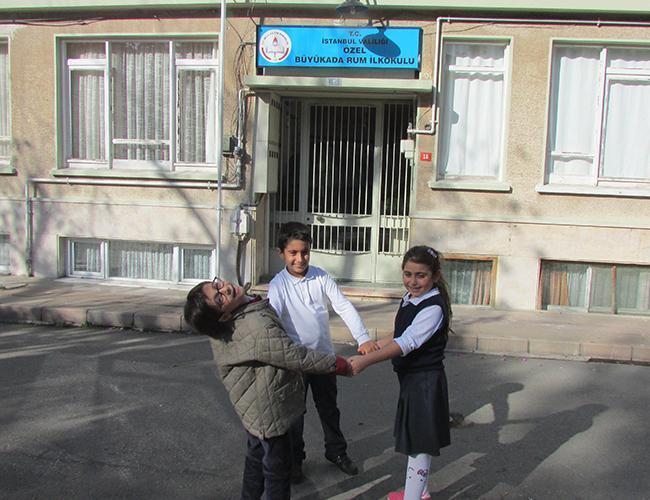
Minority schools in Turkey, of which there are 24 currently, are struggling to survive as the populations of their communities dwindle.
The representatives of some of these schools, which are today facing the risk of closure, demand resources are allocated more fairly to them and are given a status other than “private schools” by the state.
Turkish Minority Foundations representative Toros Alcan told daily Hürriyet that one of the most pressing issues they faced was that the Education Ministry considered minority schools in the country as “private schools.” But because minority schools do not seek profit, they suffered a “status problem,” he said.
“This is why the donations granted [to minority schools] are seen as income. It should not be forgotten that we are public schools,” Alcan said.
“In Turkey, the Greek population today is between 2,500 and 3,000. There are currently six Greek schools. In the 1950s, this number was around 60 to 70. In the 2000s, it fell to 10. The only institution opened in the last years is the Gökçeada Greek School,” the head of the Association for Support of Greek Community Foundations in Turkey (RUMVADER), Andon Parizyanos, said.
“Because they have no students left anymore, the Greek primary schools in the Istanbul neighborhoods of Kadıköy, Kurtuluş, and Feriköy have been closed down. Our education institutions are gradually decreasing in number. In places that used to swarm with children, there are only 50 students now. For the number of students to increase, guest students can also be given diplomas. Improving the quality of our schools and teaching the Greek language to mixed-raced children are important to us. Our income is not enough, the foundations are having financial difficulties,” Parizyanos added.
“Our only wish is that the contribution of Greek mosaics to the Turkish culture continues. The increase in the number of mixed-marriages and a decrease in the [minority] population have an impact on the decline of the number of students,” the head of the Zoğrafyon Greek High School in Istanbul, Yani Demircioğlu, told daily Hürriyet. Only 50 students are currently enrolled in the 124-year-old school.
Turkey’s Education Ministry offers tuition assistance for those attending minority schools, which is also the case for students in private schools. The ministry paid 8.7 million Turkish Liras ($2.2 million) for 2,685 students attending minority schools in the 2014-2015 academic year, 9.4 million liras for 2,681 students in the 2015-2016 academic year, and 7.2 million liras for 1,910 students in the 2016-2017 academic year.
Sixteen Armenian schools in Turkey
For Turkey’s Armenian community, the meager number of schools for their children is also a problem. With a population of 60,000 and 16 schools across the country, only 3,000 students receive education in Armenian schools.
“There were around 9,000 students in 25 schools at the end of the 1950s. Now, there are 3,000 students in 16 schools. When the education system in Turkey changes, it affects our schools, too. Because high school and university entrance exams are conducted by a centralized education system, parents want classes like physics and mathematics to be taught in Turkish, which we have the right to offer in Armenian,” Istanbul Dadyan Armenian School’s founder Arsen Arşık said.
Only one Jewish school
The only school in Turkey for the Jewish community is the Ulus Private Jewish Schools in Istanbul, which offers education to kindergarten, primary, middle school, and high school students. The total number of students is 600 at the school, which offers all classes in Turkish. Hebrew and English are taught as second languages.
Three students attend Büyükada Greek Primary School
Once a home for many Greeks in Istanbul, the Büyükada island, off the coast of Istanbul, hosts one of the six Greek schools left in Turkey. But the school currently has three students only, two of whom are seven years old and the other is nine. They have two Greek teachers and one Turkish teacher. The students do not use the original building of the school, as it had received severe damage in the 1999 Marmara earthquake.
The Greek schools, like other minority schools, are in limbo, too. Established by various minority foundations, the schools are tied the Education Ministry. In these schools, students are required to take Turkish, geography, and history classes in Turkish. Other classes such as physics, music, and mathematics are taught in Greek. The curriculum, however, is determined by the ministry. The ministry appoints some Turkish teachers to the schools and makes it compulsory for the school principal’s assistant to be Turkish.